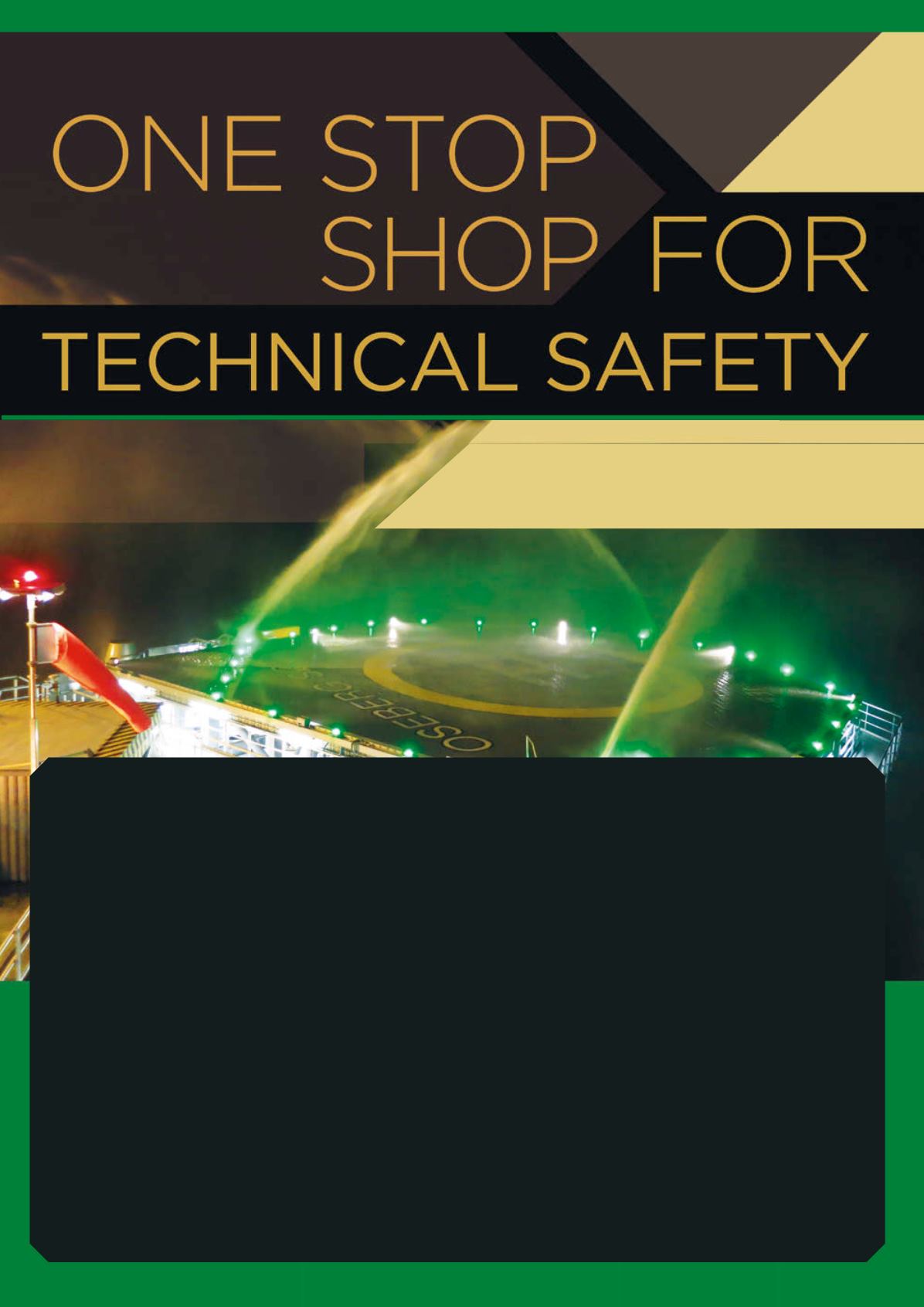
T
echnical safety is the lastmajor sector within oil and gas still
weighed down by fragmentation. The largest safety suppliers have
already aligned their safety products and expert skills, offering both
regulatory compliance and retrenchment for operators ready to integrate
safety throughout their project architecture.
Services such as active fire fighting, safety automation and pump
systems are still largely purchased and operated on a component basis.
Since its incorporation in 2010, ALIGN, a supplier of bundled technical
safety and total fire fighting solutions for the global oil and gas industry,
headquartered inNorway, has pioneered a holistic shiftof safety thinking
in the oil and gas industry. Such a perspective has also been prevalent in
themedia after the tragic Deepwater Horizon accident the same year. The
investigation report revealed flaws in the real time safetymanagement of
the platform, but also aworrying lack of long‑termsafety decisions during
engineering design and development of newplatforms.
Although a shiftof thinking in a holistic direction has beenwidely
recognised as the correct development for the industry, the oil and gas
operators have yet to apply corresponding newmethods on a consistent
basis during construction, maintenance andmodification projects. According
to theNORSOK standards developed by theNorwegian petroleum industry
to ensure safety and value adding, technical safety is an overarching task in
project development and design processes. Also inmodification projects,
such as upgrading and tie‑in of satellite fields, technical safety should adjust
to project scope and complexity, according to the branch standard. The oil
and gas industry has a lot towin on changing its approach to the question
of technical safety. The challenge is to find optimisedways tomeet safety
obligationswhile ensuring business is as competitive as possible. Many
operators are battlingwith toomany layers of administration. Even small
modifications on platforms can end up passing through several costly layers
of projectmanagement in away that is no longer necessary. This belief has
led ALIGN to position itself as a specialist provider involved right fromthe
design study to the completedmodification project.
Promisingdevelopment
The relatively few commissions that until now have included a practical
implementation of technical safety on a holistic basis, point towards a
gradual shift in the industry’s behaviour.
Recently Talisman Energy in Norway concluded a safety EPCI‑C project
on an oil platformon the Norwegian Shelf, integrating safety into a larger
modification job based on a concept study carried out by Origo Solutions,
one of ALIGN’s brands. The study recommended broadmodifications
or replacements of switchgear and distribution boards, gas detectors,
the fire and gas system, emergency shutdown systems, control panels
for generators and other equipment. Unlike a traditional procedure, the
contractor carried out themodifications without taking the platformout
of production. The key was to integrate safety expertise across the project
phases.
“ALIGN had the project all from the start, and carried out a
complicated installation job to our full satisfaction”, says Talisman Energy
Project Manager Sigurd Oftedal.
Erik Christensen, ALIGN, Norway,
explains the benefits of increased integration
in technical safety for oil and gas operators.
|
67


